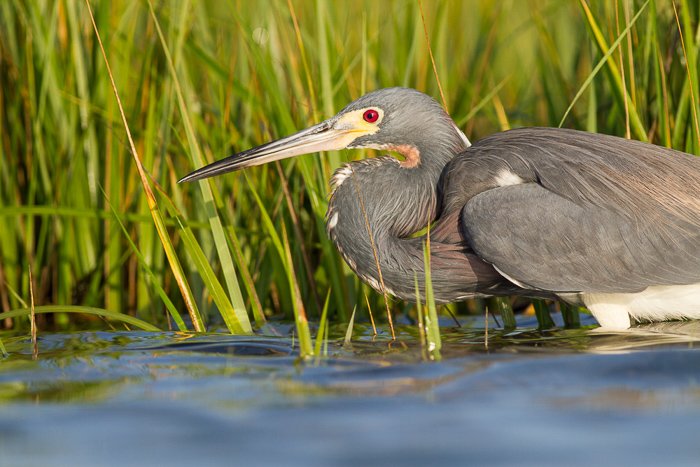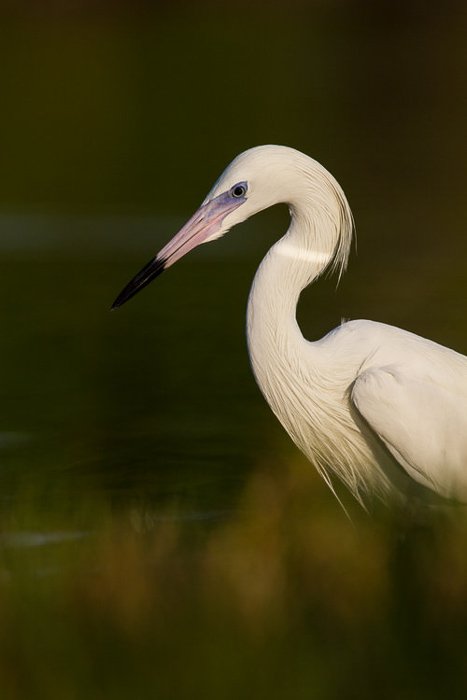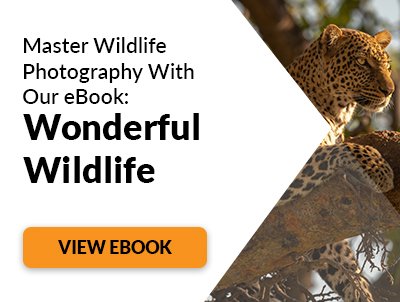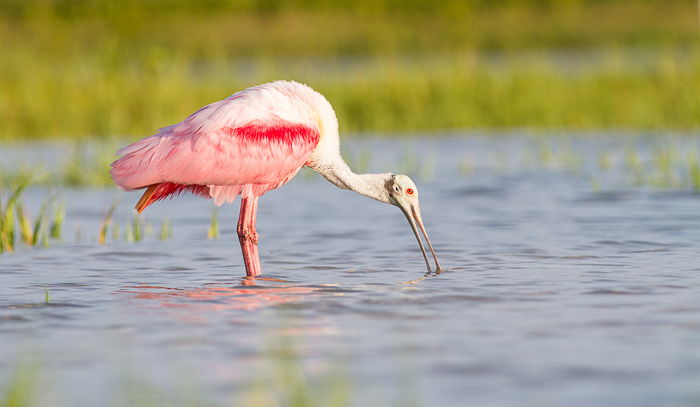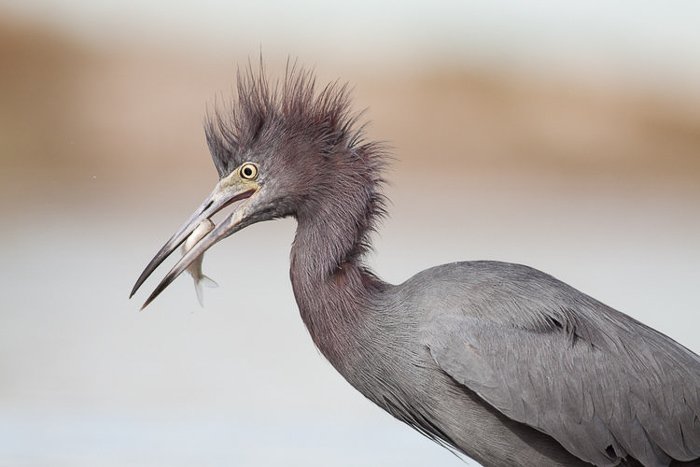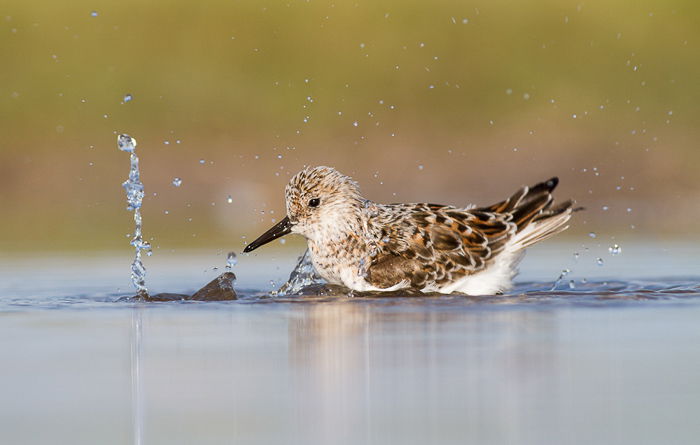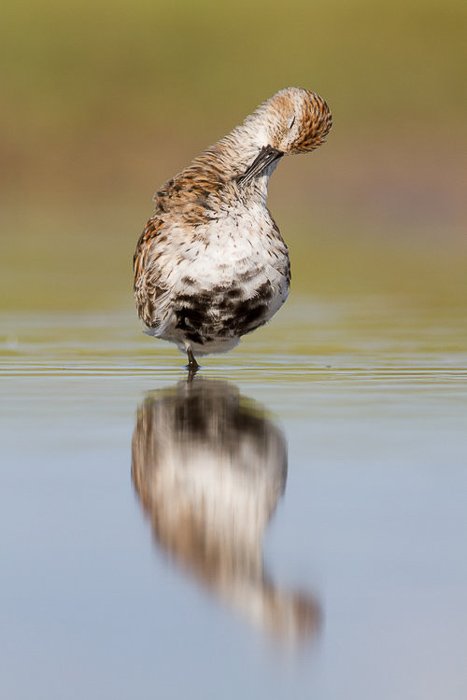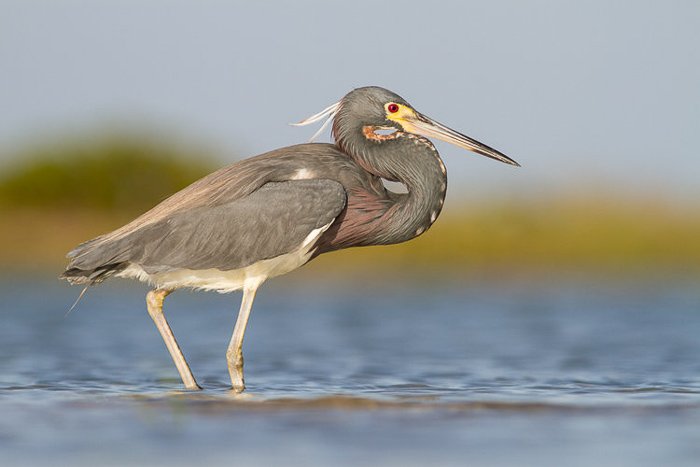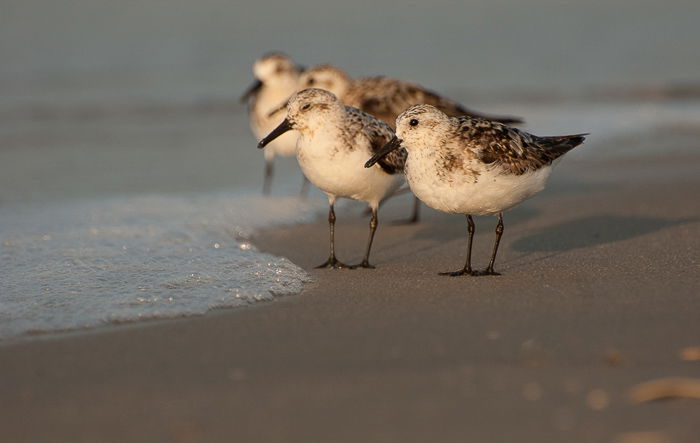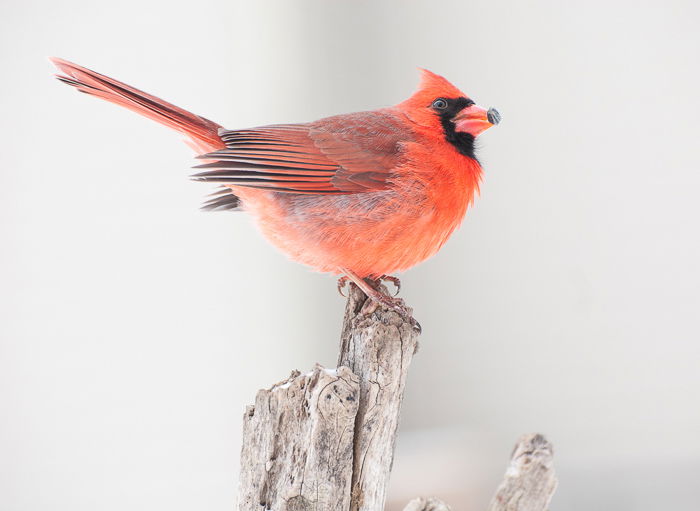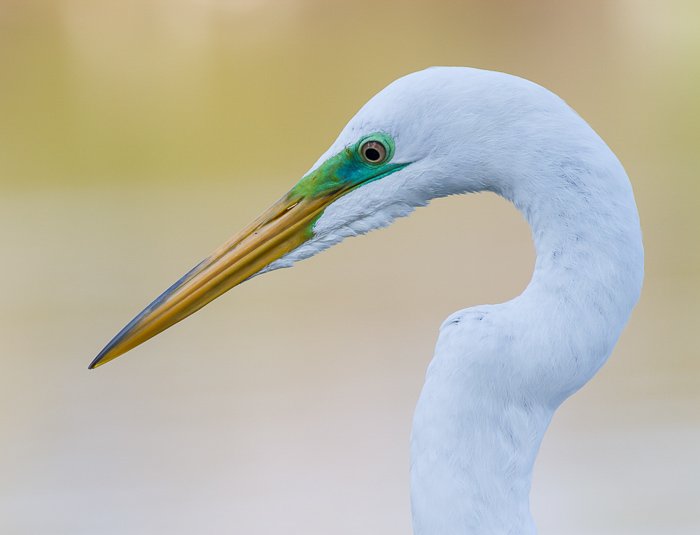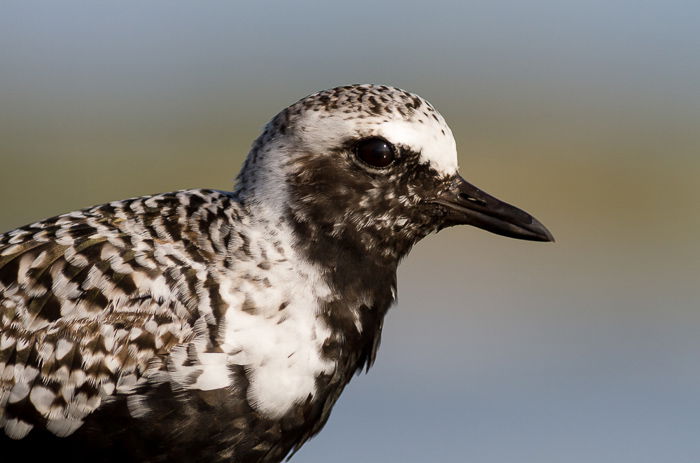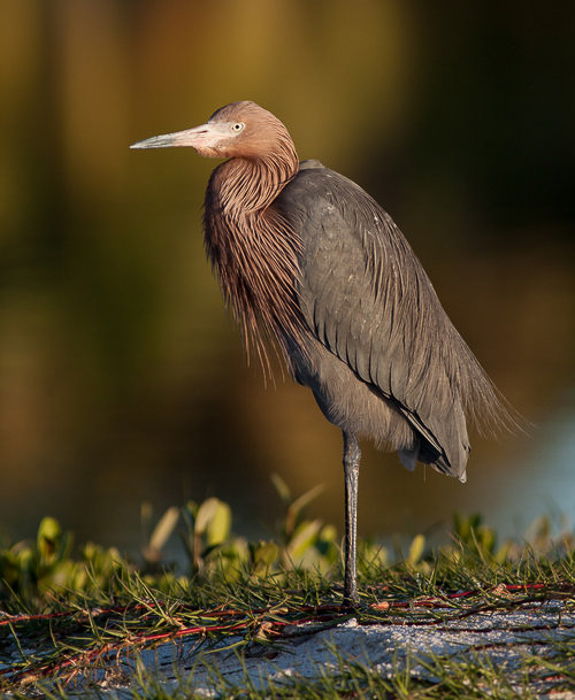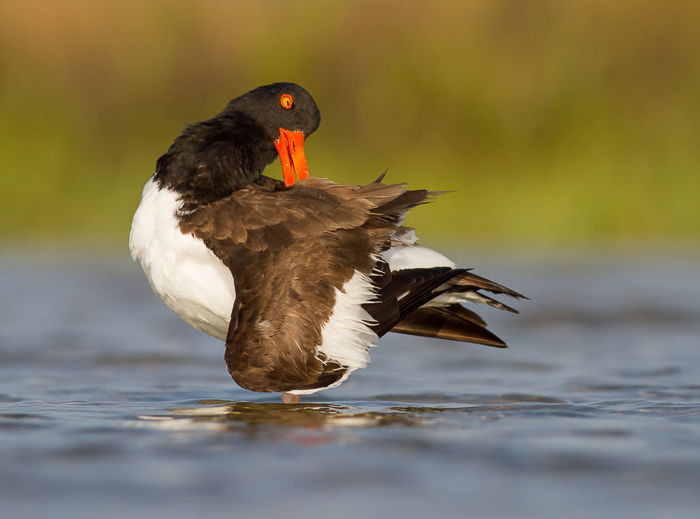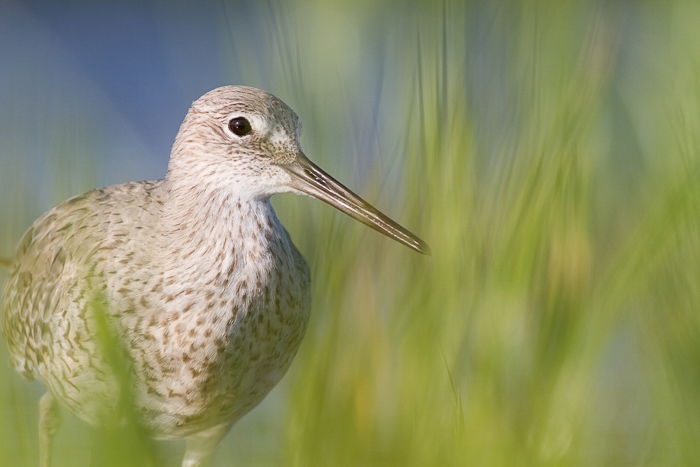Fortunately, achieving frame filling images in wildlife photography isn’t hard. There are a few simple principles that any beginner wildlife photographer can follow. In this tutorial, I will share with you these principles. I will offer a number of bird and animal photography tips that can be used effectively by anyone pursuing wildlife photos. You will leave with the knowledge necessary to nab beautiful, frame-filling images of animals and birds.
1. Animal Photography: The Goal Is To Be Ignored
The art of stealth is the bread and butter of wildlife photography. Nearly all bird photographers, animal photographers, and nature photographers use the art of stealth in their work. What is the art of stealth? It’s less complex than it sounds, and several of the tips I offer below give more precise examples. But the essence of stealth is this: remain unnoticed, both in terms of sight and sound. Notice that I didn’t say “remain invisible.” Such an instruction is often impractical, because animals tend to have significantly better senses than humans. On the other hand, animals can become acclimated to humans fairly easily. This is where the art of stealth comes in. You go unnoticed. In animal photography, to be stealthy is to be ignored. How do you act stealthy? This often amounts to one main technique, which I will refer to as the meander. Say you see a shorebird preening off in the distance. You want to photograph it. What do you do? The meander, of course! The meander requires that you get on your knees, or even lie so you’re completely flat against the ground. Then you move forward slowly, smoothly. Starting and stopping every few seconds, so as to be sure that your subject has remained unruffled by your presence. I like to weave a bit from side to side. This communicates a lack of interest in the animal’s presence. Also, be sure that you check your subject constantly. Not only will an anxious animal soon disappear into the brush, but a photographer’s presence can actually be harmful.
2. Study the Behaviour Patterns of Your Subject
Another, often forgotten tip for seeking out wildlife? Learn the behaviours of your subject. The fact is that most animals are predictable. Some animals visit the watering hole at the same time every day. Some animals defecate before flying. To be a great wildlife photographer, you just need to know which behaviours apply to which animals. Once you do, you’ll be able to understand in advance what your subject is going to do. This is invaluable. In addition, species frequent specific habitats. If you’re looking to photograph, say, a lesser prairie chicken, a bit of research will indicate habitat types and locations where prairie chickens are often found. My advice? Start on Google, and work your way from more general to more specific information. This is often my workflow.
3. Be Prepared to Wait
While I emphasized the meander approach above, your wildlife photography will also benefit from some careful waiting. Of course, this has to be done well. You have to use your research from Tip 2; use it to discover the best locations for whatever subject you’re seeking. Then you can use one of two waiting approaches. The first approach involves the use of a blind (a tent or barrier of some sort that you hide in, allowing you to remain unnoticed by their subjects). I discuss using a blind in Tip 4 and Tip 5. Here I’m going to discuss the second waiting approach, which is much simpler, and involves no extra gear. All you have to do is predict the movement of your subject. Place yourself so as to be near where your subject is going to be. If you’ve done your research properly, this shouldn’t be hard. If you’ve already found your subject, but are struggling to get close enough, a bit of observation can be handy. Look to see how your subject is moving. Quietly walk to where your subject is heading. Crouch down, lie down, hide behind a tree – it all works as long as you stay still. An unmoving individual just isn’t very threatening to your moving wildlife. Then, when the subject eventually darts by, grab your prize-winning wildlife photos.
4. Entice Animals With Props
One way to make lying in wait more successful is to plan the location in advance. This is especially common among bird photographers, who use setups to ensure that the bird lands in a good location, in good light, and on a good perch. What does a setup involve? The simplest type of setup might just be a single log, placed out in a meadow. You know that birds tend to fly about the meadow. Now they’ll land on the branch. What a perfect pose! More complex setups require feeders, water, and prepared perches. If you understand your subject well, you can attract them to a particular area. Then you can nail the shot when your bird poses nearby. All setups, however, require some lying in wait. You must place yourself near enough to the setup to get the shot. This means remaining completely quiet, completely unmoving. That way your subject won’t be scared off. In bird photography, setups have a lot of potential. I’ve used them to great effect.
5. Use Blinds to Make Yourself Invisible to Wildlife
As I mentioned previously, you can use a blind to remain unnoticed by wildlife. You can buy proper blinds made for photographers or hunters. These often have camouflage colors, are waterproof, etc. But there are other, less pricier options. For instance, why not try to make a blind of your own? Just grab an old tent and cut a few holes in it. One for your lens, another couple for your eyes… Once you’re done, place the tent in an area that you believe hosts a lot of wildlife. Leave it for a few days. The animals need time to adapt. Soon you’ll be able to come to your blind and have fun in it for hours on end. Watch as all sorts of critters stroll past, not caring about the wildlife photographer in the tent. And be sure to take tonnes of pictures!
6. Be Prepared for Muddy Situations
This is more general, and applies to a number of the scenarios discussed above. The best wildlife photographers, the ones that use the meander approach and the lying in wait approach – they are all unafraid to get dirty. I’ve crawled through dozens of metres of mud. I’ve waded into murky, unpleasant lagoons. And I’ve sat in freezing cold waters, waiting in vain for a bird to turn its head in just the right direction. You have to be willing to get dirty. Otherwise, you’re going to miss shots. Wildlife is wild, after all! It likes wild places. If you’re willing to get dirty, you’ll find your opportunities for animal photography opening up. You’ll be better at meandering – because you’ll be willing to meander through the mud and muck and damp. You’ll be better at lying in wait – because you’ll be able to lie in the cold and the buggy. If you can get past your dislike of unpleasant situations, you’ll be much more skilled in the art of stealth.
Conclusion
As a wildlife photographer, I often struggle to get powerful images of animals. Getting close to wildlife is extremely difficult. However, with the tips discussed above and a bit of perseverance, you can become a master in the art of stealth. You can become excellent at researching the habits of wildlife. You can learn to create setups that result in stunning animal photography. My goal in writing this article was to explain how I manage to get close to wildlife. It included knowledge that I’ve gathered over the years, often through trial and error. I guarantee that it will be useful to all budding wildlife photographers. If you learn to meander, if you learn to lie in wait, if you learn to research your subject, create setups and blinds, and get dirty, then you will come away with stunning wildlife close-ups. Oh, and above all? Practice!
